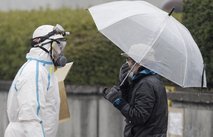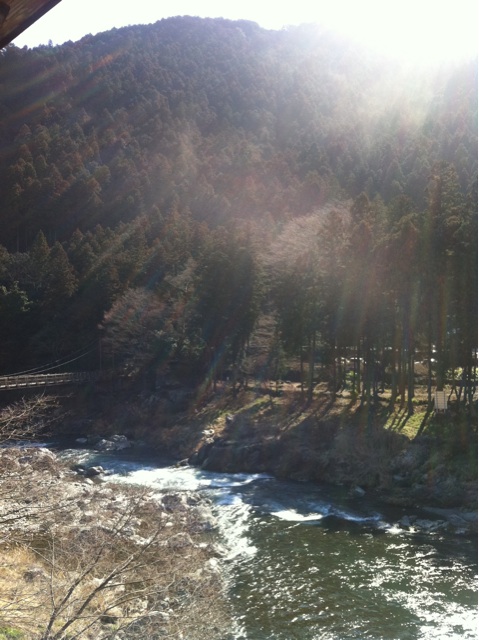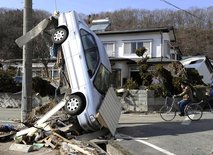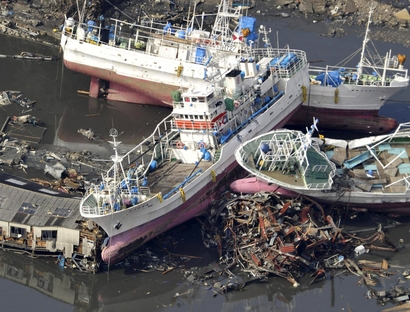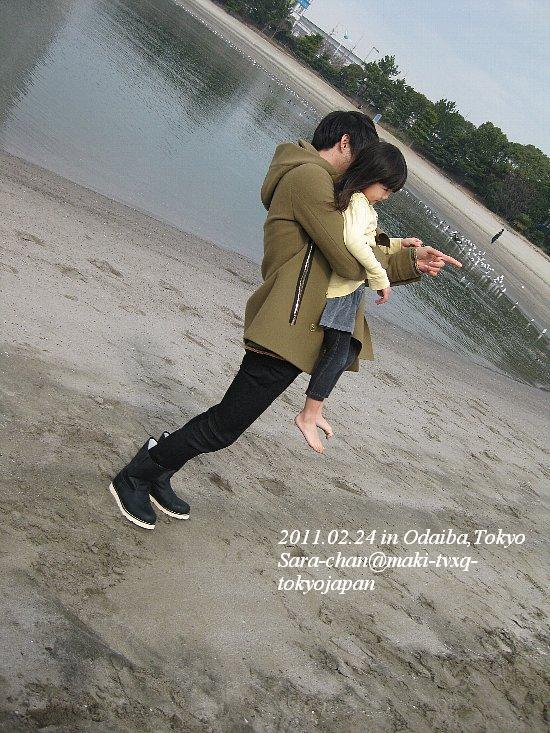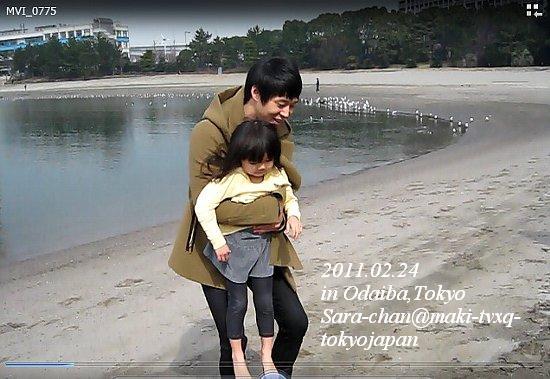Editors Note: The continuing disaster in Japan is truly alarming. There has not been an earthquake of this magnitude since the early twentith century. 8.9 on the Richter scale. Thousands unnaccounted for and it is believed over a thousand dead. Nuclear plants are compromised, and while we have been right to be concerned about Junsu and his safe return to Korea, we also have to be concerned about those left behind. Many of the friends, acquaintances, and business associates of Jaejoong, Yoochun, Junsu, Changmin, and Yunho live and may have been affected by the disaster in Japan. We also must be aware of other people who may be in hurting circumstances. If we pray for one we must pray for all. Please take the time to bow your head and send up a prayer for these people and their nation and for all of the people in other locales such as America’s Hawaii and the West Coast.
California, Oregon, and Washington State were evacuated as much as possible and damage was done to parts of Oregon and California. There is not as much damage done comparatively, nevertheless, these areas need help also as your concept of disaster is relative to your own circumstances. In other words, people are dealing with losses on their own personal level. Loss is loss. As the world is no longer unconnected, let us all think of ways and actions that may help to alleviate the actual and potential harm of this earthquake and subsequent Tsunami.
Momma Cha
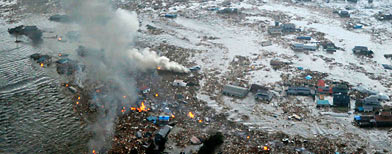
Picture credits: AP NHK Tv
Hundreds killed in tsunami after 8.9 Japan quake
AP – Buildings burn in Yamada town, Iwate prefecture (state) after Japan’s biggest recorded earthquake hit … By MALCOLM FOSTER, Associated Press Malcolm Foster, Associated Press – 22 mins ago
TOKYO – A ferocious tsunami unleashed by Japan’s biggest recorded earthquake slammed into its eastern coast Friday, killing hundreds of people as it carried away ships, cars and homes, and triggered widespread fires that burned out of control.
Hours later, the waves washed ashore on Hawaii and the U.S. West coast, where evacuations were ordered from California to Washington but little damage was reported. The entire Pacific had been put on alert — including coastal areas of South America, Canada and Alaska — but waves were not as bad as expected.
In northeastern Japan, the area around a nuclear power plant was evacuated after the reactor’s cooling system failed and pressure began building inside.
Police said 200 to 300 bodies were found in the northeastern coastal city of Sendai, the city in Miyagi prefecture, or state, closest to the epicenter. But authorities said they weren’t able to reach the area because of damage to the roads.
A police official, who declined to be named because of department policy, said it may be a while before rescuers could reach the area to get more precise body count. So far, they have confirmed 178 were killed, with 584 missing. Police also said 947 people were injured.
The magnitude-8.9 offshore quake triggered a 23-foot (seven-meter) tsunami and was followed for hours by more than 50 aftershocks, many of them more than magnitude 6.0. In the early hours of Saturday, a magnitude-6.7 earthquake struck the central, mountainous part of the country — far from the original quake’s epicenter. It was not immediately clear if this latest quake was related to the others.
Friday’s massive quake shook dozens of cities and villages along a 1,300-mile (2,100-kilometer) stretch of coast, including Tokyo, hundreds of miles (kilometers) from the epicenter. A large section of Kesennuma, a town of 70,000 people in Miyagi, burned furiously into the night with no apparent hope of being extinguished, public broadcaster NHK said.
Koto Fujikawa, 28, was riding a monorail when the quake hit and had to pick her way along narrow, elevated tracks to the nearest station.
“I thought I was going to die,” Fujikawa, who works for a marketing company, said. “It felt like the whole structure was collapsing.”
Scientists said the quake ranked as the fifth-largest earthquake in the world since 1900 and was nearly 8,000 times stronger than one that devastated Christchurch, New Zealand, last month.
“The energy radiated by this quake is nearly equal to one month’s worth of energy consumption” in the United States, U.S. Geological Survey Scientist Brian Atwater told The Associated Press.
President Barack Obama pledged U.S. assistance following what he called a potentially “catastrophic” disaster. He said one U.S. aircraft carrier is already in Japan, and a second is on its way. A U.S. ship was also heading to the Marianas Islands to assist as needed, he added.
An American man working at one of the nuclear plants near the coast when the quake hit said the whole building shook and debris fell from the ceiling. Danny Eudy, 52, a technician employed by Pasedena, Texas-based Atlantic Plant Maintenance, and his colleagues escaped the building just as the tsunami hit, his wife told The Associated Press.
“He walked through so much glass that his feet were cut. It slowed him down,” said Pineville, Louisiana, resident Janie Eudy, who spoke to her husband by phone after the quake.
The group watched homes and vehicles be carried away in the wave and found their hotel mostly swept away when they finally reached it.
The government later ordered about 3,000 residents near that plant — in the city of Onahama — to move back at least two miles (three kilometers) from the plant. The reactor was not leaking radiation but its core remained hot even after a shutdown. The plant is 170 miles (270 kilometers) northeast of Tokyo.
Japan’s nuclear safety agency said pressure inside the reactor at the Fukushima No. 1 power plant has risen to 1.5 times the level considered normal, and slightly radioactive vapor may be released to reduce the pressure.
The Defense Ministry said it had sent dozens of troops trained to deal with chemical disasters to the plant in case of a radiation leak.
Trouble was reported at two other nuclear plants, but there was no radiation leak at either of them.
Prime Minister Naoto Kan planned to hold an emergency Cabinet meeting early Saturday morning and them take a helicopter to the quake-hit area and the troubled nuclear power plants.
Japan’s coast guard said it was searching for 80 dock workers on a ship that was swept away from a shipyard in Miyagi.
Even for a country used to earthquakes, this one was of horrific proportions because of the tsunami that crashed ashore, swallowing everything in its path as it surged several miles (kilometers) inland before retreating. The apocalyptic images on Japanese TV of powerful, debris-filled waves, uncontrolled fires and a ship caught in a massive whirlpool resembled scenes from a Hollywood disaster movie.
Large fishing boats and other vessels rode high waves ashore, slamming against overpasses or scraping under them and snapping power lines along the way. Upturned and partially submerged cars bobbed in the water. Ships anchored in ports crashed against each other.
At least two trains were swept off their tracks along the coast, but no one was hurt, though five passengers from one train scrambled to the roof of a nearby house.
The tsunami roared over embankments, washing anything in its path inland before reversing directions and carrying the cars, homes and other debris out to sea. Flames shot from some of the homes, probably because of burst gas pipes.
Waves of muddy waters flowed over farmland near Sendai, carrying buildings, some of them ablaze. Drivers attempted to flee. Sendai airport was inundated with thick, muddy debris that included cars, trucks, buses and even light planes.
Highways to the worst-hit coastal areas buckled. Telephone lines snapped. Train service in northeastern Japan and in Tokyo, which normally serve 10 million people a day, were suspended, leaving untold numbers stranded in stations or roaming the streets. Tokyo’s Narita airport was closed indefinitely.
In one town alone on the northeastern coast, Minami-soma, some 1,800 houses were destroyed or badly ravaged, a Defense Ministry spokeswoman said.
As night fell and temperatures hovered just above freezing, tens of thousands of people remained stranded in Tokyo, where the rail network was still down. The streets were jammed with cars, buses and trucks trying to get out of the city.
The city set up 33 shelters in city hall, on university campuses and in government offices, but many planned to spend the night at 24-hour cafes, hotels and offices.
Japanese automakers Toyota, Nissan and Honda halted production at some assembly plants in areas hit by the quake. One worker was killed and more than 30 injured after being crushed by a collapsing wall at a Honda Motor Co. research facility in northeastern Tochigi prefecture, the company said.
Jesse Johnson, a native of the U.S. state of Nevada who lives in Chiba, north of Tokyo, was eating at a sushi restaurant with his wife when the quake hit.
“At first it didn’t feel unusual, but then it went on and on. So I got myself and my wife under the table,” he told The Associated Press. “I’ve lived in Japan for 10 years, and I’ve never felt anything like this before. The aftershocks keep coming. It’s gotten to the point where I don’t know whether it’s me shaking or an earthquake.”
NHK said more than 4 million buildings were without power in Tokyo and its suburbs.
A large fire erupted at the Cosmo oil refinery in the city of Ichihara and burned out of control with 100-foot (30-meter) flames whipping into the sky.
“Our initial assessment indicates that there has already been enormous damage,” Chief Cabinet Secretary Yukio Edano said. “We will make maximum relief effort based on that assessment.”
He said the Defense Ministry was sending troops to the hardest-hit region. A utility aircraft and several helicopters were on the way.
Also in Miyagi prefecture, a fire broke out in a turbine building of a nuclear power plant, but it was later extinguished, said Tohoku Electric Power Co.
A reactor area of a nearby plant was leaking water, the company said. But it was unclear if the leak was caused by the tsunami or something else. There were no reports of radioactive leaks at any of Japan’s nuclear plants.
Jefferies International Ltd., a global investment banking group, estimated overall losses of about $10 billion.
Hiroshi Sato, a disaster management official in northern Iwate prefecture, said officials were having trouble getting an overall picture of the destruction.
“We don’t even know the extent of damage. Roads were badly damaged and cut off as tsunami washed away debris, cars and many other things,” he said.
The U.S. Geological Survey said the 2:46 p.m. quake was magnitude 8.9, the biggest to hit Japan since record-keeping began in the late 1800s and one of the biggest ever recorded in the world.
The quake struck at a depth of six miles (10 kilometers), about 80 miles (125 kilometers) off the eastern coast, the agency said. The area is 240 miles (380 kilometers) northeast of Tokyo. Several quakes hit the same region in recent days, including one measured at magnitude 7.3 on Wednesday that caused no damage.
A tsunami warning was extended to a number of areas in the Pacific, Southeast Asia and Latin America, including Japan, Russia, Indonesia, New Zealand and Chile. In the Philippines, authorities ordered an evacuation of coastal communities, but no unusual waves were reported.
Thousands fled homes in Indonesia after officials warned of a tsunami up to 6 feet (2 meters) high, but waves of only 4 inches (10 centimeters) were measured. No big waves came to the Northern Mariana Islands, a U.S. territory, either.
The first waves hit Hawaii about 9 a.m. EST (1400 GMT). A tsunami about 7 feet (2.1 meters) high was recorded on Maui and a wave at least 3 feet (a meter) high was recorded on Oahu and Kauai. Officials warned that the waves would continue and could get larger.
Japan’s worst previous quake was a magnitude 8.3 temblor in 1923 in Kanto that killed 143,000 people, according to USGS. A 7.2-magnitude quake in Kobe in 1995 killed 6,400 people.
Japan lies on the “Ring of Fire” — an arc of earthquake and volcanic zones stretching around the Pacific where about 90 percent of the world’s quakes occur, including the one that triggered the Dec. 26, 2004, Indian Ocean tsunami that killed an estimated 230,000 people in 12 nations. A magnitude-8.8 temblor that shook central Chile in February 2010 also generated a tsunami and killed 524 people.
___
Associated Press writers Jay Alabaster, Mari Yamaguchi, Tomoko A. Hosaka and Yuri Kageyama in Tokyo; Jaymes Song in Honolulu and Mark Niesse in Ewa Beach, Hawaii; Seth Borenstein and Julie Pace in Washington, and Michael Kunzelman in New Orleans contributed to this report.
Source: Associated Press/Yahoo News


